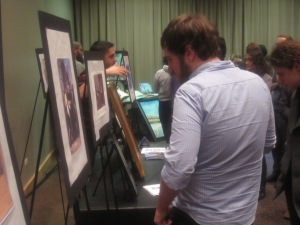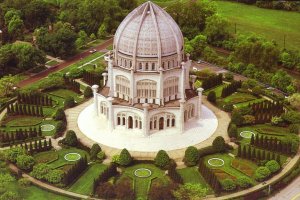DePaul students and faculty participated in DePaul’s annual“Vincentian Service Day” May 4, where students

DePaul students garden outside of the Zakat Chicago Community Center dur- ing Vincentian Service Day May 4. This is the 13th year the community service event has been held.
volunteer at sites across Chicago in a super-charged day of service. DePaul volunteers cheerfully flocked to McGrath Arena at 8 a.m. on Saturday where they partook in some interfaith prayers and were sent off to their respective service sites. The cheerful demeanor of all those present was derived from the knowledge of the good they were doing in their community.
DePaul’s Jewish Life coordinator, Matthew Charnay, took a moment to describe the idea behind Vincentian Service Day.
“It is something that staff and students look forward to all year. The chance to get out into the community and do work with your fellow classmates is such a positive experience,” said Charnay. “The ability to stand in solidarity with not only peers, but fellowChicagoans, people of faith and standing together as a community, not just a school community but a world community, is a highlight for the entire university.”
It seems that Charnay voiced exactly how DePaul students feel about this day. “(Vincentian Service Day) is important because it teaches DePaul students to look beyond themselves,” said Taj Simmons, DePaul junior andVSD team leader. “Too often in college we become self-absorbed and block out what’s going on all around us, and Vincentian Service Day really gives us a chance to go beyond what we know.”
Simmons also noted how much it has expanded over the years.
“It’s grown so much since I was a freshman. My first year, all of the service groups started inside of the (St. Vincent de Paul church) before leaving for their work. Going from that to the quad last year to McGrath Arena this year is just an amazing leap forward. I never thought there would be so many people dedicated to taking action to keep Chicago as glorious as it is, but now that I know there are, I can’t help but feel elated.”
Charnay echoed Simmons’ sentiment in regards to the day’s steady growth over the years. “We keep expanding the number of service sites that we visit and this year we even had students and families come to DePaul for activities. It will only continue to grow. When you have such a great program and everyone involved can see the wealth of positivity and justice that is the end product, it makes it very easy to keep growing that program. I can only see it getting bigger in years to come.”
The community members who benefited from this day had positive things to say as well. Laila Muhammad, director of Zakat Chicago Community Center gushed about DePaul students who planted a vegetable garden at the community center. “The students were very helpful. The garden really brightened up the area,” said Muhammad. “It’s something that will continue to benefit the community. Last year when we had the garden, a boy had never had red lettuce before, but now he asks for it like candy. It can change a person’s life and encourage more nutritious eating.” In this way, one day of service can have lasting effects on a community.
“I think (the service day) is great,” said Muhammad. “I think that it shows DePaul’s understanding of the holistic approach to education. You can’t just teach in the classroom, you have to go out and experience life.”
That appears to be precisely what DePaul’s Vincentians in Action are hoping to achieve. Indeed, Charnay said “It is one thing to talk the talk, but when we give students the outlet to walk the walk of service, they have a chance to experience firsthand the mission that drives this university to new heights. To take something theoretical (and) intellectual such as the ‘dignity of every human life’ and make it tangible, the lesson is better received, and it gives students time to reflect on their work.”
By Anne Malina
Published: Sunday, May 12, 2013
Updated: Sunday, May 12, 2013 20:05







